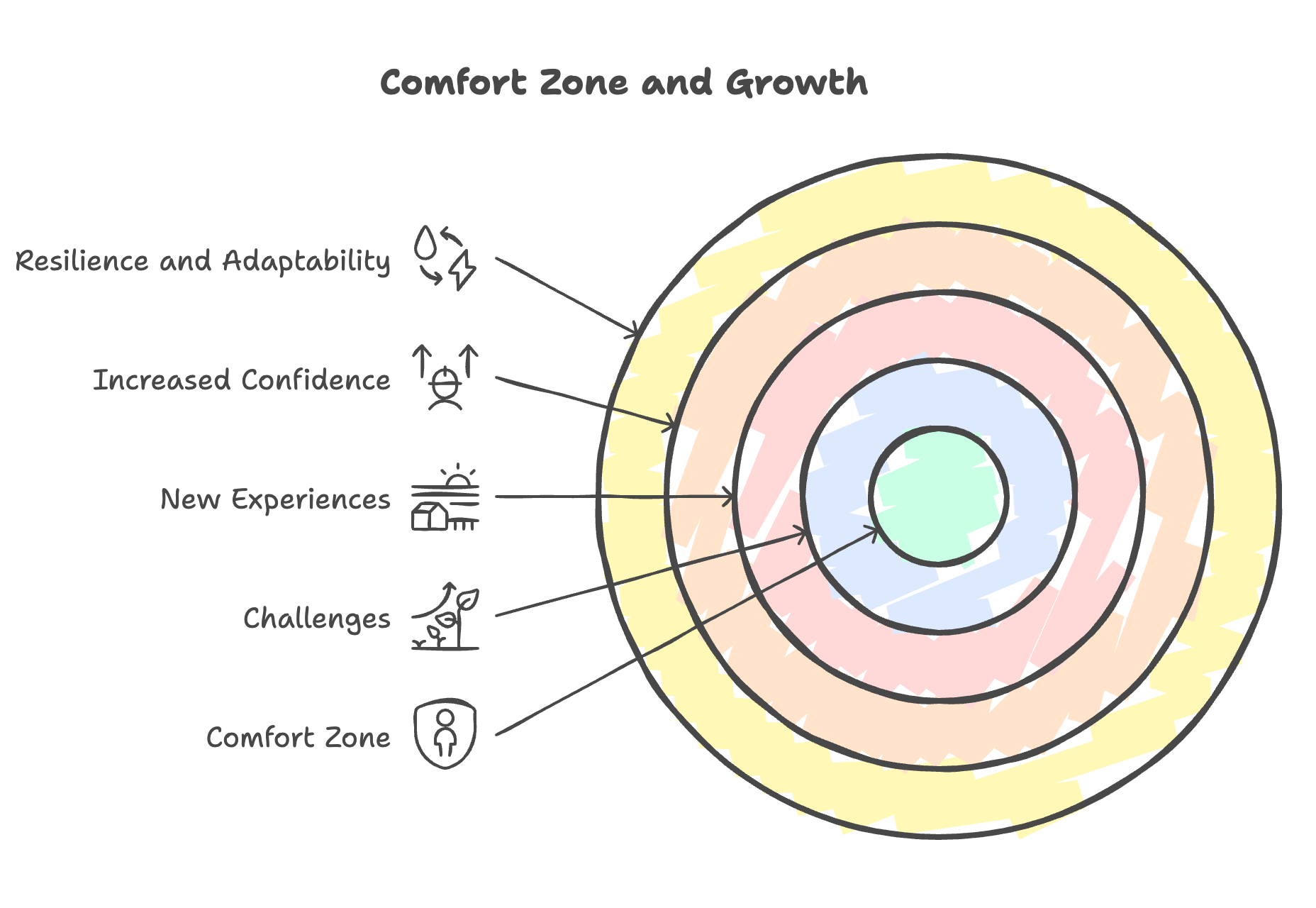
The Fear Trap: How Assumptions Hold Us Back and What to Do About It
I’m sure we’ve all felt fear in some form or shape. There’s the fear you feel when you miss a step going down the stairs, realize you forgot your wallet while standing in line, or when a car rear-ends you at a stop sign.
But the fear I’m talking about is different — the kind that makes you freeze before attempting something new. The one that fills your head with thoughts like:
‘What if I fail?’ ‘What if I’m not good enough?’ ‘What will others think?’
This fear isn’t triggered by immediate danger, but by the uncertainty of stepping outside of your comfort zone.
We live in our comfort zone where everything feels familiar because we’ve done it before and we know the outcome. But stepping outside means facing the unknown — learning something new, answering questions we don’t have knowledge of, or taking actions we’ve yet to attempt. This all creates fear:
Fear of judgment.
Fear of scrutiny.
Fear of sarcasm.
Fear of failure.
These feelings can be overwhelming, and so we retreat back to our comfort zone.

What if I told you these fears aren’t real?
Sometimes our perceptions cloud our judgment. We start believing worst-case scenarios and rarely question them.
Is Fear Needed?
Absolutely! Fear is a warning signal that protects us from harm. It stops us from getting too close to the train tracks when a train approaches. Fear is our brain’s way of keeping us safe from real threats.
But not all fear is equal.
Some fears hold us back because we overthink and assume the worst. Let’s take a moment to distinguish between actual fear and assumptions.
Fear vs. Assumptions: Knowing the Difference
Actual Fear (Real Threats):
Tangible risks that require attention, often due to a lack of knowledge, experience, or preparation.
Examples of actual fear:
Fear of public speaking because you’ve never done it before.
Fear of financial loss when starting a business without proper planning.
Fear of swimming in deep water when you don’t know how to swim.
How to respond:
Gain knowledge: Learn and prepare to face the challenge.
Take small steps: Gradually expose yourself to the situation.
Seek support: Work with mentors or friends for guidance.
Assumptions (False Perceptions):
Mental stories we tell ourselves without evidence, fueled by self-doubt and overthinking.
Examples of assumptions:
Assuming people will judge you negatively if you share your ideas.
Thinking you’ll fail before even trying.
Believing you’re not qualified without testing your skills.
How to respond:
Challenge the thought: Ask yourself, “Is this really true?”
Look for evidence: Find instances where your assumption was proven wrong.
Reframe your mindset: Replace self-doubt with empowering thoughts.
Now What?
It’s safer in our comfort zone, but there’s no growth there either. Ask yourself, is it worth it not to take on a challenge?
Next time fear creeps in before trying something new, follow these steps:
1. Label your fear: Is it protecting you, or is it limiting you?
2. Question your assumptions: Is it based on fact, or just your mind pulling you back into comfort?
3. Take one small step: Try something unfamiliar and embrace the discomfort.
4. Tell yourself it’s okay: Mistakes are lessons, not failures.
5. Celebrate your progress: No matter how small, it builds confidence.
6. Do it again: Keep challenging yourself with new opportunities.
Your comfort zone is safe, but it can also be limiting. If we let fear and assumptions dictate our choices, we may never discover our full potential.
So, the next time fear whispers doubts, ask yourself:
“Is this fear real, or am I making assumptions?”
What’s one assumption you can challenge today to move forward with confidence?


